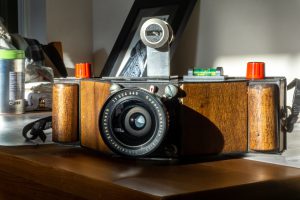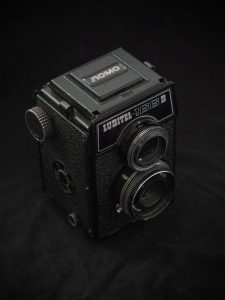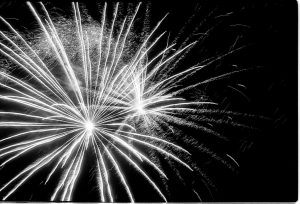Someone asked me recently how I pick which articles to include in these Recommended Reading posts. It’s a question I really never put much thought into with my only thought being that if I found it interesting, you might too.
But then I actually looked at the articles I select, and camera reviews seem to get the most preferential treatment as those are the kinds of articles that make up the bulk of my site. I’ve included articles about home developing and film hacks that I’ve tried myself, and on occasion a news story that interested me. I tend to shy away from short ports or those featuring 5 frames with a model as they really don’t add much to the knowledge of a camera and only seem to serve to highlight the photography of the person using them.
![]() For this week’s post, there were a huge number of excellent articles to choose from, but for my featured post, I picked one for an under the radar camera. One that you often see in bulk lots of cameras on eBay or sitting on antique store shelves with little regard to how it actually performs.
For this week’s post, there were a huge number of excellent articles to choose from, but for my featured post, I picked one for an under the radar camera. One that you often see in bulk lots of cameras on eBay or sitting on antique store shelves with little regard to how it actually performs.
Alyssa from Aly’s Vintage Camera Alley took the time to give a full review to the Beacon Two Twenty Five, a camera I actually tried to review myself, but couldn’t make it through a whole roll without catastrophic failure. I read with interest her experience with the camera and loved how she brought the name of the previous owner into the discussion.
Her results are predictably “lo-fi”, but impressive nonetheless, and like all of her written reviews, she includes a video review at the end of the article as well.
Here are more great posts from some of my favorite sites:
In another camera I’ve tried to review, the Minolta Maxxum 7 is a semi-professional level 35mm SLR that I have in the collection and have actually shot, but getting one that fully works has proved to be a challenge. Like many high feature modern SLRs of the 1990s, the Maxxum 7 has an impressive feature set, but is often plagued by electrical issues that render the camera inoperable. I will continue to search for one worthy of a full review, but until I do, check out this review by Bob Janes of 35mmc who was lucky enough to find a fully working example.
I’ve got a thing for panoramic cameras, and after my recent review of the Hasselblad Xpan, I’ve accepted that I’ll never afford one for my permanent collection, so I like to look at what different options are out there. This week, Peggy from Camera Go Camera looks at two very different methods for shooting panoramas on 35mm. The cheap all plastic Halina Panorama point and shoot, versus a Rolleicord TLR with 35mm film loaded both check off the box for a panoramic camera, but accomplish it in very different ways. Whichever is right for you (or neither) all depends on what you expect to get out of it.
 Awww man, another panoramic camera! Unlike Peggy’s article above that features two easy to find cameras, this one by Alex Luyckx of the Revenilabs Six-One-Seven inspires some severe panoramic GAS! This homemade franken-camera is the work of Toronto based photographer and tinkerer, Matt Bechberger who built this camera himself out of metal and wood using a Schneider Super-Angulon wide angle lens and a custom viewfinder to frame the 6cm by 17cm images (hence the Six-One-Seven name) on 120 film. The camera is a one-off prototype now and Alex suggests that Matt hasn’t yet committed to building more, but if he does, this could be a cost effective alternative to the very expensive Fuji GX617.
Awww man, another panoramic camera! Unlike Peggy’s article above that features two easy to find cameras, this one by Alex Luyckx of the Revenilabs Six-One-Seven inspires some severe panoramic GAS! This homemade franken-camera is the work of Toronto based photographer and tinkerer, Matt Bechberger who built this camera himself out of metal and wood using a Schneider Super-Angulon wide angle lens and a custom viewfinder to frame the 6cm by 17cm images (hence the Six-One-Seven name) on 120 film. The camera is a one-off prototype now and Alex suggests that Matt hasn’t yet committed to building more, but if he does, this could be a cost effective alternative to the very expensive Fuji GX617.
Yashica (actually Yashima) was a well respected maker of quality TLRs. Models like the Yashica A, D, and 124G are well known to be very good and affordable alternatives to more expensive German Rolleis. But Yashica also had a large lineup of these cameras, some of which are less known. This week Tiago Sousa Garcia from EMULSIVE takes a look at the uncommon Yashica B. This variant of the Yashica A upgrades that camera with shutter speed and aperture levers on the sides, but otherwise is still a pretty simple TLR. With old cameras, simple does not necessarily mean bad, and in this case, Tiago seems quite smitten with his.
I’ve reviewed some pretty bad cameras before, but they’ve all been film from an era when a simple single speed shutter and plastic lens, a metal flap and spring were all that was required to make an image. But what about the world’s crappiest digital camera? Normally I wouldn’t bother sharing a review of a terrible digital camera, but the lengths of HOW CRAPPY this camera is, makes it worth a read, and a laugh! This week Alan Duncan from Canny Cameras shares with us a truly terrible device that’s so terrible, it doesn’t even have a name. Coming in a box that claims it to make 16MP, 12MP, and 1.6MP images, it turns out that none of those are correct. This is camera has a 10 year old webcam with a fixed 1280×960 resolution with the world’s weakest flash, all squished into a plastic shell somewhat resembling a DSLR. I laughed out loud a couple of times during Alan’s humorous bashing of the world’s worst digital camera. Why do people even bother making these? I mean, someone had to mold the plastic and shove them into boxes…at what point can you not make any profit building and selling these pieces of garbage?
KMZ Zenits are a dime a dozen. They were produced from the early 1950s to after the fall of the Soviet Union so they’re not hard to come by. One that is hard to come by is the Kristall, a Zenit that’s not actually called a Zenit and doesn’t look like one, the Kristall was produced for only one year and has a very unique hammer tone paint finish and some art deco vertical stripes on top of the pentaprism. I actually had one of these once and hated it so much, I never bothered to give it a full review, instead including it in an early Cameras of the Dead article. Apparently Stephen Dowling from kosmofoto didn’t want to shoot his either, instead giving a nice summary of the camera and it’s history.
What better way to followup a Zenit review, with another Zenit review. This time it’s the much more common Zenit E reviewed by Peggy at Camera Go Camera. She admits to liking the camera, yet not being able to come up with a lot to say about it, which I think is an appropriate summary of the Zenit E. It’s a fine camera that can produce fine results, but it certainly won’t inspire you in it’s use.
It’s a short read, but what more can you really say about the Olympus Trip 35 that hasn’t already been said by a huge number of people online, myself included. So it’s probably appropriate that today’s post by Jim Grey shows off some shots of his home state Indiana shot on his Olympus Trip 35 using Ferrania P30 Alpha and developed into the HC-110 alternative, LegacyPro L110. I already know I love the Trip, but thanks to Jim, I have a new film and developer that I want to try out!
I am a little late on this one, but having been three weeks since my last Recommended Reading post, I missed this excellent article by my friend Johnny Martyr who shot fireworks on his 1930 Leica. Proving that you don’t need a state of the art digital camera with instant feedback and a high speed shutter to capture the beauty of exploding pyrotechnics, Johnny makes good use of his 90 year old camera and knowledge of exposure. I neither own a 1930 Leica, nor have I ever attempted to shoot fireworks on film, but after reading this article, I think I will try!
Last year when I reviewed the camcorder shaped half-frame Yashica Samurai SLR, I found it to be an intriguing, but flawed camera. I did not enjoy shooting it as much as I had hoped and ended up trading it off to a new owner shortly after that review. It seems that Connor Brustofski from Casual Photophile had some of the same reactions as I did shooting his. Connor came to many of the same conclusions as I that the Samurai is blessed with a good lens, but cursed with terrible auto focus, and an overall design that doesn’t seem to succeed at any one thing, but don’t take my word for it, read his!
I often have to remind myself that the name “Contax” wasn’t exclusive to 35mm Zeiss-Ikon rangefinders and that the name was also used on a quality lineup of 35mm SLRs made in Japan by Kyocera who also owned Yashica. Thus far in my collection, Contax SLRs have eluded me, but after reading this excellent write up by Joe Monat at 35mmc on the Contax S2, I have a new camera to add to my wish list!
I don’t know what it is about this post, but recently, Jim Grey from Down the Road shared some closeups of his bicycle shot on his Olympus OM-1 with Adox HR-50. Just pictures of a bike, in black and white, and nothing else. Yet, I find myself captivated by these images for their simplicity and beauty. Jim’s selection of film, camera, and subject prove that inspiration can come from anywhere. Even your bike.
 I’ve already recommended to you two Zenit posts this week, so why not followup with yet another long-lived Soviet camera, the Lubitel 166B. This week Andrey Khludeyev from kosmofoto shares with us the story of his grandfather’s personal Lubitel 166B, showing some of the many pictures this twin lens camera has produced over the years. The Lubitel is loosely based on the original Voigtländer Brilliant, but evolved over a large part of the 20th century into one of the most popular Soviet cameras ever made.
I’ve already recommended to you two Zenit posts this week, so why not followup with yet another long-lived Soviet camera, the Lubitel 166B. This week Andrey Khludeyev from kosmofoto shares with us the story of his grandfather’s personal Lubitel 166B, showing some of the many pictures this twin lens camera has produced over the years. The Lubitel is loosely based on the original Voigtländer Brilliant, but evolved over a large part of the 20th century into one of the most popular Soviet cameras ever made.
This site is hosted on WordPress and one of WordPress’s features is the ability to alert you to traffic from other sites. Last week, I started getting hits from autoweek.com and thought that was a strange site to receive links from, until I saw the article by Murilee Martin who linked to my Canon DL-9000 “scamera” review when he took his Mitsubishi branded trashcam to shoot Mitsubishi cars in a junk yard! Apparently Murilee has previously done similar articles shooting old cars with a Kodak box camera, so this was a pleasant surprise to see that he thought enough of my article to link to it!
If you’re anything like me, balancing the weight of raising a family, maintaining a house, working a full time job, all while there’s a global pandemic going on, a key to maintaining sanity is finding good TV shows and movies to binge on late at night after the kids go to bed.
What if I were to tell you about a new science fiction show involving a group of elite warriors who are apart of a secret division of the Catholic church that battle demons on Earth in an effort to prevent the holy powers of an angel from falling into the hands of demons from hell? If that’s not cool enough, what if the leader of this mercenary group was a dead quadriplegic teenage orphan who comes back to life as some sort of holy super soldier?
Sounds pretty cool, right? But what is it called? Wait for it….
WARRIOR NUN
Yes, Warrior Nun is a new show on Netflix which just made it’s debut in early July and although my wife and I haven’t yet finished the first season, we’ve seen enough episodes to know this is worth checking out. The special effects are well done and a step up from one of those cheesy Syfy Channel original series, and there’s some cool fight sequences. If you’re a fan of shows like Supernatural and Lucifer, this is definitely right up your alley!




The “Mitsubishi Scamera used to photograph automotive Mitsubishi cars” was interesting, but the real “rabbit holes” are the early 20th- and late 19th-century box cameras used to photograph junkyards, automobile engines, and “beautiful scenery seen from an automobile junkyard.” I marvel at his dedication to adapting 120 film and spools to a 101 (!!) Kodak camera. That collection of washers/spacers makes adapting 120 for 620 or 117 look like child’s play. He doesn’t say what kind of Orhtochromatic roll film he uses, but the images are “out of the 19th century.” (“Doc Brown” took his 19th century box camera and Time Locomotive to the early 21st century and took some pictures!?) Where did that Kodak Brownie Six Twenty go? I wonder if Freestyle Sales Co. has any odd “Vintage European” Ortho roll film for sale?;)